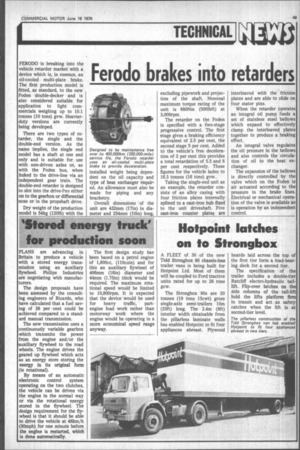'Stored energy truck' for production soon
Page 51

If you've noticed an error in this article please click here to report it so we can fix it.
PLANS are advancing in Britain to produce a vehicle with a stored energy transmission using an auxiliary flywheel Philips Industries are negotiating with manufacturers.
The design proposals have been assessed by the consulting engineers of Ricardo, who have calculated that a fuel saving of 38 per cent could be achieved compared to a standard manual transmission.
The new transmission uses a continuously variable gearbox which transmits the power from the engine and/or the rauxiliary flywheel to the road wheels. The engine drives the geared up flywheel which acts as an energy store storing the energy in its original form (ie rotational).
By means of an automatic electronic control system operating on the two clutches, the vehicle can be driven via the engine in the normal way or via the rotational energy stored in the flywheel. The design requirement for the flywheel is that it should be able to drive the vehicle at 48km/h (30mph) for one minute before the engine is restarted, which is done automatically. The first design study has been based on a petrol engine of 1,800cc, (110cuin) and for this an auxiliary flywheel of 406mm (16in) diameter and 44mm (1.75in) thick would be required. The maximum rotational speed would be limited to 10,800rpm. It is expected that the device would be used for heavy traffic, partengine load work rather than motorway work where the engine would be operating in a more economical speed range anyway.












































































































































































